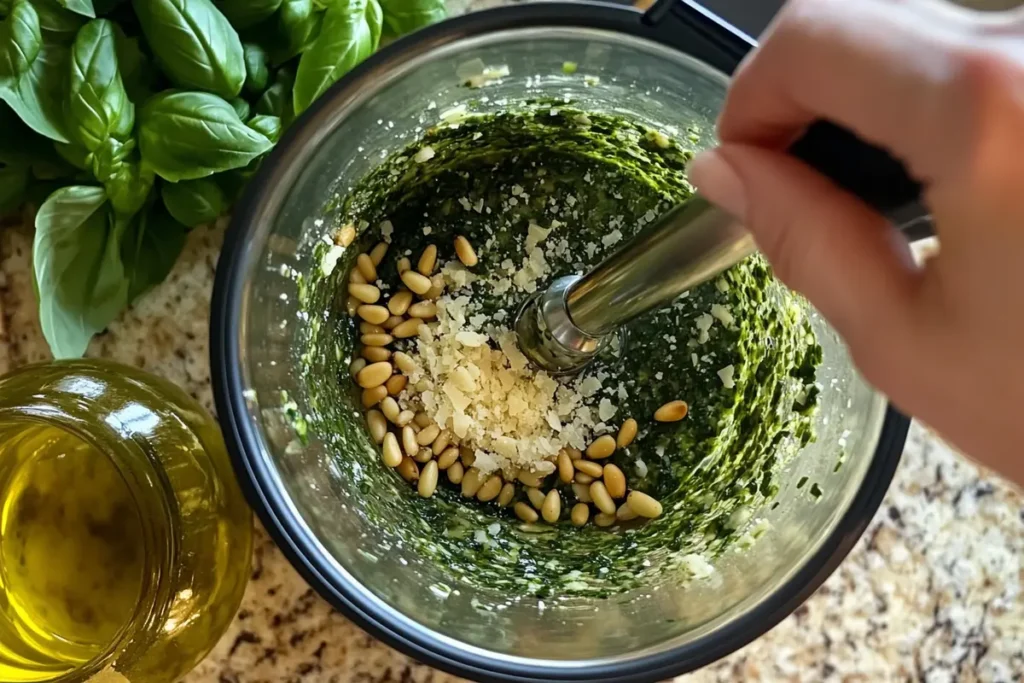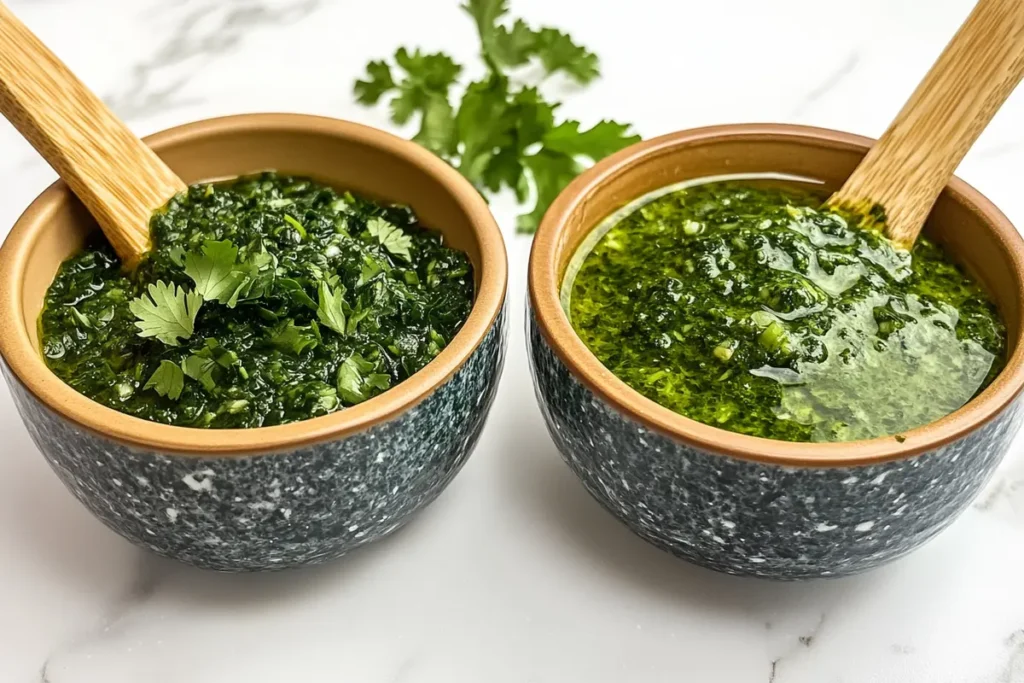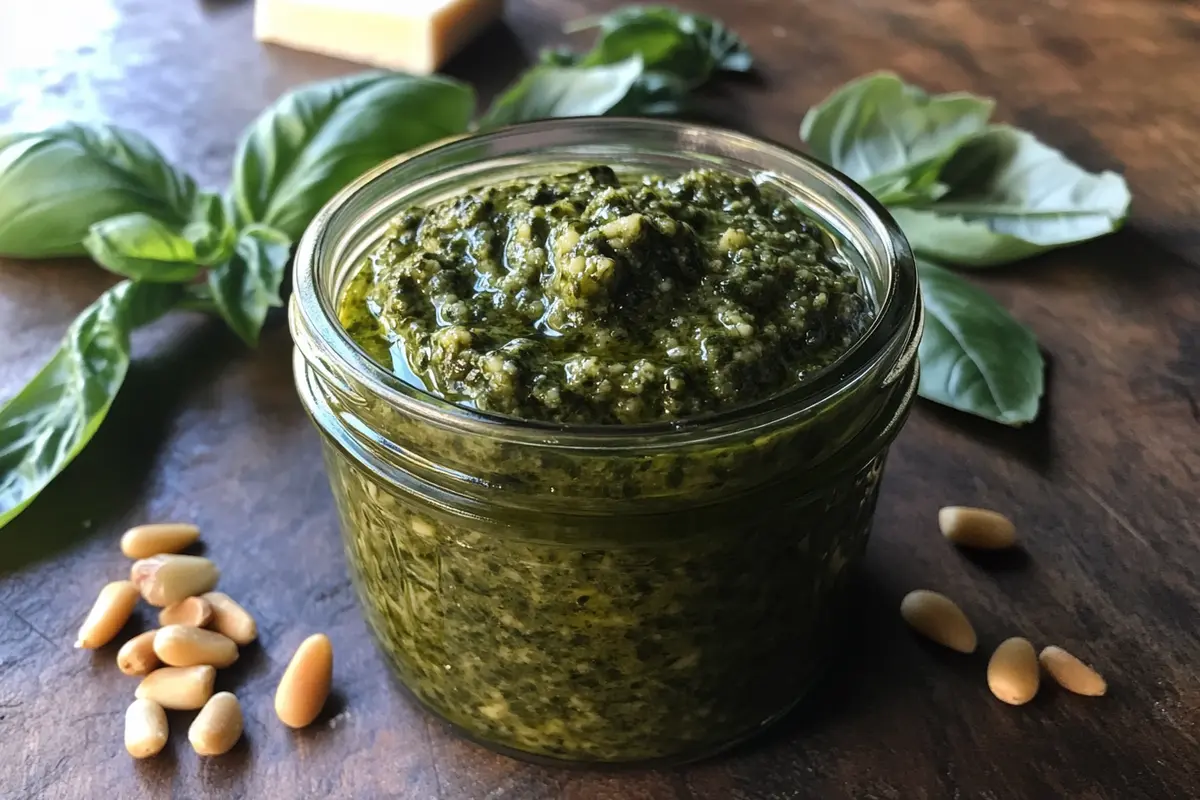How to Make Pesto Martha Stewart? A Comprehensive Guide
Making pesto is an art, blending fresh, vibrant ingredients into a flavorful sauce that’s both versatile and delicious. In this guide, we’ll explore how Martha Stewart approaches pesto; therefore, we’ll share her secrets for crafting this classic recipe. From the essential ingredients to creative variations and practical storage tips, you’ll learn everything you need to make the perfect pesto sauce. In addition, we’ll highlight the unique touches that make Martha Stewart’s approach truly special. Let’s dive in and, thus, bring a touch of Martha Stewart’s magic to your kitchen!
Introduction to Pesto and Martha Stewart’s Signature Approach
What is Pesto?
Pesto, originating from Genoa, Italy, is a bright green sauce traditionally made with fresh basil, garlic, pine nuts, Parmesan cheese, and olive oil. Therefore, this quintessential Italian condiment is loved for its vibrant taste and versatility, enhancing everything from pasta dishes to marinades. In addition, it’s incredibly simple to prepare, making it accessible for cooks of all skill levels. Whether you’re a culinary novice or a seasoned home chef, pesto is a must-have in your repertoire. Thus, it continues to be a favorite in kitchens worldwide.
Martha Stewart’s Unique Spin on Pesto
Martha Stewart, a name synonymous with culinary excellence, takes a timeless approach to pesto. However, her recipes go beyond the basics, emphasizing simplicity, quality, and balance. In addition, she elevates traditional flavors with modern twists, making them suitable for any occasion. Whether she’s using classic basil or experimenting with fresh herbs, Martha’s pesto recipes always stand out for their elegance and taste. Thus, her methods inspire home chefs to bring a touch of sophistication to their cooking.
By following her methods, you’ll not only master the art of making pesto but also discover how to adapt it to suit your personal preferences. Stay tuned as we unpack her step-by-step process and share pro tips to perfect this beloved sauce.
The Essential Ingredients for Perfect Pesto
Key Ingredients in How to make pesto Martha Stewart?
To create Martha Stewart’s classic pesto, it’s all about the quality and freshness of the ingredients. Therefore, focusing on high-quality components ensures a flavorful and authentic sauce. The stars of this dish are:
- Fresh Basil Leaves: Basil provides that signature aroma and flavor. Martha emphasizes the importance of using freshly picked leaves for a vibrant green color and bold taste. However, if basil is unavailable, arugula or spinach can act as excellent substitutes.
- Olive Oil: High-quality extra virgin olive oil is non-negotiable. In addition to binding the ingredients, it imparts a rich, fruity flavor that complements the other components perfectly.
- Pine Nuts: These small, buttery nuts contribute creaminess and texture. If pine nuts are hard to find, walnuts or almonds can work as budget-friendly alternatives; therefore, you can still achieve a similar creamy result.
- Garlic: Fresh garlic cloves give the pesto a subtle spicy kick. For a milder flavor, roast the garlic before blending; this step, in addition, adds a slight sweetness to the sauce.
- Parmesan Cheese: Aged Parmesan or Pecorino Romano adds the umami and nutty undertones that define traditional pesto. Thus, these cheeses are essential for achieving that signature depth of flavor.
Ingredient Sourcing Tips
Finding the best ingredients can transform a good pesto into a stellar one. Here are Martha’s suggestions:
- Seasonal Basil: Purchase basil at farmers’ markets or grow your own to ensure peak freshness.
- Cheese and Nuts: Opt for blocks of Parmesan instead of pre-grated for better texture and taste. Toasting nuts briefly can deepen their flavor.
- Olive Oil Selection: Look for olive oils labeled “cold-pressed” or “first press” for maximum quality.
This careful attention to ingredients ensures you’ll make a pesto sauce worthy of the Martha Stewart name.
Step-by-Step Guide to How to make pesto Martha Stewart?
Equipment and Tools Needed
Martha provides options for every type of cook:
- Mortar and Pestle: For traditionalists, using a mortar and pestle gives the pesto a rustic texture and deeper flavors. However, this method may require more effort and time.
- Blender or Food Processor: For convenience, modern tools like a blender or food processor achieve a smoother consistency in minutes. Thus, these tools are ideal for busy cooks who still want great results.
Making the Pesto

Here’s how to recreate Martha Stewart’s pesto recipe:
- Combine the Ingredients: Add basil leaves, garlic, toasted pine nuts, and grated Parmesan to the food processor. Pulse a few times to lightly blend the ingredients; this ensures the flavors start to meld and, therefore, creates a more uniform base.
- Add Olive Oil Gradually: With the processor running, slowly drizzle in olive oil. This technique not only ensures a creamy, emulsified sauce but also prevents the mixture from becoming too oily. In addition, it helps the pesto maintain the perfect consistency.
- Taste and Adjust: Season with salt and pepper to taste. If the balance isn’t perfect, add more cheese or oil as needed; thus, you can fine-tune the flavor to your liking. On the other hand, if it feels too salty, a small squeeze of lemon juice can help balance it.
By following these steps, you’ll master how to make pesto Martha Stewart style and enjoy a sauce that’s both timeless and versatile.
Relevant Internal Link Opportunity: Explore unique ways to serve pesto with Pesto Turkey Pinwheels for a delicious twist on finger foods.
Creative Variations and Additions
Herb Variations

One of the great things about Martha Stewart’s pesto recipes is how adaptable they are. While basil is the traditional base, experimenting with other fresh herbs can, therefore, open up new flavor profiles:
- Parsley Pesto: Perfect for those who prefer a milder taste. In addition, parsley pairs well with fish or as a dressing for roasted vegetables, making it a versatile option.
- Cilantro Pesto: With its bold and zesty notes, cilantro pesto is ideal for tacos or grilled chicken. However, its distinctive flavor may not appeal to everyone, so consider testing a small batch first.
Using different greens keeps your dishes exciting and, thus, allows you to enjoy pesto year-round.
Flavor Enhancements
To make your pesto uniquely yours, consider these enhancements:
- Lemon Zest or Juice: Adding a splash of citrus brightens the flavor and balances the richness of the oil and cheese. Therefore, this is a great option for those who enjoy lighter, tangy notes.
- Spicy Pesto: For a kick, include red chili flakes or a small piece of fresh chili pepper while blending. On the other hand, you can adjust the spice level to suit your preference.
These simple tweaks align perfectly with Martha Stewart’s philosophy of elevating traditional recipes while keeping them approachable.
Suggested Reading: For more creative recipe ideas, explore Pesto Turkey Pinwheels, which show how to use pesto in fun appetizers.
Pairing Pesto with Dishes
Classic Pairings
Pesto is a versatile sauce, and its uses go beyond just pasta. Here are some classic pairings to try:
- Pasta and Pesto: Toss your freshly made pesto with spaghetti, penne, or linguine for a quick and satisfying meal. Add grilled chicken or shrimp for extra protein.
- Bread and Pesto: Spread pesto on crusty bread or use it as a base for a sandwich. For a richer flavor, top with mozzarella or goat cheese before toasting.
These timeless combinations are why learning how to make pesto Martha Stewart style is so rewarding.
Creative Uses of Pesto
If you’re ready to think outside the box, try these inventive ways to enjoy pesto:
- Pesto as a Marinade: Marinate chicken, fish, or tofu in pesto before grilling or baking. The flavors infuse beautifully, making your dishes irresistible.
- Pesto in Salads and Soups: Drizzle pesto over a fresh salad or swirl it into a bowl of tomato soup for an unexpected burst of flavor.
The adaptability of pesto ensures that it always finds a place on your table.
For more delicious recipes and ideas on incorporating pesto, check out other amazing recipes on our site. Whether you’re exploring appetizers or main courses, there’s always something new to try!
Storing and Preserving Pesto
Short-Term Storage Tips
If you’re making pesto to use within a few days, proper storage is key to preserving its vibrant color and flavor. Therefore, it’s important to follow these simple steps:
- Refrigeration: Transfer your freshly made pesto to an airtight container. In addition, pour a thin layer of extra virgin olive oil over the top to prevent oxidation, which can cause browning.
- Covering Options: Use plastic wrap pressed directly onto the surface of the pesto to limit air exposure. This step is crucial, as it helps maintain freshness and flavor.
By using these methods, you can keep your pesto fresh for up to five days, ensuring you can enjoy it at its peak.
Freezing Pesto for Longevity
For longer storage, freezing is your best bet. This approach ensures that the flavor and quality are preserved over time. Here’s how to do it without compromising taste or texture:
- Use Ice Cube Trays: Portion the pesto into ice cube trays and freeze until solid. Then, transfer the cubes to a resealable bag for convenient storage.
- Thawing Techniques: Take out the desired number of cubes and thaw them overnight in the fridge or at room temperature. This gradual thawing process helps maintain the sauce’s texture.
Thus, freezing preserves the flavor for up to six months, making it easy to add a burst of Martha Stewart-style pesto to meals anytime.me.
FAQs About Making Pesto Martha Stewart Style
What Can I Substitute for Pine Nuts in Pesto?
If pine nuts are unavailable or too pricey, don’t worry. Alternatives like walnuts, almonds, or even sunflower seeds work beautifully. These options keep the texture creamy and the flavor nutty, while staying true to the how to make pesto Martha Stewart recipe framework.
How Do I Prevent Pesto from Turning Brown?
Pesto can oxidize and lose its bright green color quickly. To prevent this:
- Always store it with a layer of olive oil on top.
- Use fresh, dry basil leaves to minimize moisture.
- Adding a squeeze of lemon juice during blending helps preserve its hue naturally.
Can I Make Pesto Without Cheese?
Absolutely! For a dairy-free version, replace Parmesan with nutritional yeast. This ingredient replicates the cheesy flavor while making the pesto vegan-friendly.
What’s the Best Way to Reheat Pesto Dishes?
When reheating pesto-coated pasta or dishes, use low heat. High heat can cause the sauce to lose its fresh, vibrant flavor. Instead, toss the dish in a warm pan, adding a splash of olive oil if needed.
With these tips and tricks, you can confidently master how to make pesto Martha Stewart and troubleshoot common challenges along the way. Whether you’re storing it for future use or adapting it to suit your diet, pesto remains a staple worth perfecting!
The Benefits of Homemade Pesto
Nutritional Advantages
Making your own pesto at home offers several health benefits. Unlike store-bought versions, which often contain preservatives, homemade pesto lets you control every ingredient; therefore, you can avoid unnecessary additives and excess salt. Basil, the star ingredient, is rich in antioxidants and anti-inflammatory properties. In addition, it’s packed with essential nutrients that promote overall health. Paired with heart-healthy olive oil and protein-packed nuts, pesto becomes a nutritious addition to your meals. Thus, mastering how to make pesto Martha Stewart allows you to enjoy a healthier, fresher alternative that’s bursting with flavor.
Cost and Quality Comparison How to make pesto Martha Stewart?
Homemade pesto is not only healthier but also more cost-effective. Premium store-bought pesto can be expensive; however, it often compromises on taste and ingredient quality. By making it at home, you can select the freshest basil, high-quality olive oil, and flavorful cheese without breaking the bank. In addition, making pesto yourself allows you to experiment with ingredients to match your preferences. Plus, nothing beats the satisfaction of enjoying a sauce crafted with care and precision! Therefore, homemade pesto provides both quality and value.
Final Thoughts and Inspiration How to make pesto Martha Stewart?
Why Learning How to Make Pesto Martha Stewart Style Matters
Learning how to make pesto Martha Stewart style isn’t just about following a recipe; it’s about embracing a philosophy of simplicity, quality, and adaptability. With her approach, you can create a classic yet versatile sauce that complements countless dishes. From traditional pasta pairings to creative appetizers, pesto becomes a staple you’ll want to make over and over again.
Take Your Cooking to the Next Level
Now that you’ve mastered this timeless recipe, it’s time to get creative. Experiment with different herbs, explore bold flavor additions, and use pesto in new and unexpected ways. Whether you’re hosting a dinner party or enjoying a cozy meal at home, pesto is a surefire way to elevate any dish.
For more inspiring recipes and ideas, check out our collection of delicious recipes to continue your culinary journey. With Martha Stewart’s guidance and a little practice, you’ll turn every meal into something extraordinary.
Nutritional Content (Per 100g)
Homemade pesto not only delivers exceptional flavor but also provides a range of nutrients essential for your diet. Below is the nutritional breakdown per 100g of Martha Stewart-style pesto
| Nutrient | Amount (per 100g) |
|---|---|
| Calories | 430 kcal |
| Protein | 4.8 g |
| Fat | 45 g |
| Saturated Fat | 8 g |
| Carbohydrates | 5.1 g |
| Fiber | 1.3 g |
| Sodium | 390 mg |
| Vitamin A | 740 IU |
| Vitamin C | 9 mg |
| Calcium | 130 mg |
| Iron | 1.8 mg |
This table provides a clear overview of the nutritional values of homemade pesto, allowing you to understand its health benefits. Compared to store-bought versions, homemade pesto avoids excess salt and preservatives while delivering wholesome nutrients.

